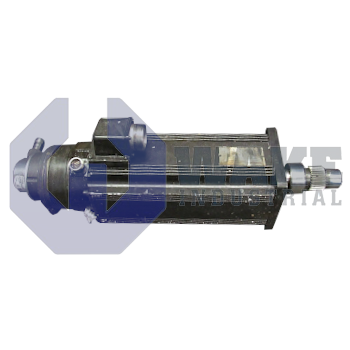Product Description
Rexroth Bosch designed the MAC093C-0-KS-2-C/110-B-0/S012 motor with an enclosure to protect the components of the motor from contamination. Electric motors work on the basic concept that electrical power is transformed into magnetic force, then into kinetic energy, which produces motion. The commutator transforms the alternating voltage produced by the armature into a direct current. The main objective of the commutation is to maintain constant torque applied to the armature in one direction. More specifically, by switching the coils off and on, the commutator regulates the flow of the generated electromagnetic fields.
The MAC093C-0-KS-2-C/110-B-0/S012 has a 093C dimension and KS-type winding. Sliding contacts cannot be used to create an electrical connection with this brushless motor. As a result, the winding is a component of the stator, which houses the permanent magnet. The voltage applied to the terminals is electronically controlled with this kind of commutation. In this case, the armature's position and the stator's current flow must coincide precisely. Sensors are utilized to ascertain the rotor's position.
Each closed-loop system's fundamental design is based on a feedback system's capacity to alter a system's basic dynamics, especially to stabilize it. When the AC motor is running, the smaller motor functions as a generator, feeding its output back to the drive controller. This allows the controller to modify the voltage supplied to the motor, so maintaining the shaft speed, which is being measured at a nearly constant level regardless of changes in load. When using the AC motor, the environment must support safe electrical and electronic device usage standards. This AC motor should not be used in the presence of combustible gasses, dust, oil, mist, or moisture.
 Wake Industrial Warranty
Wake Industrial Warranty















